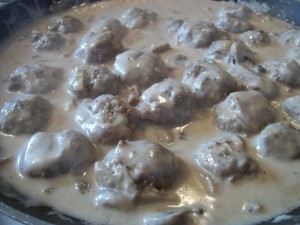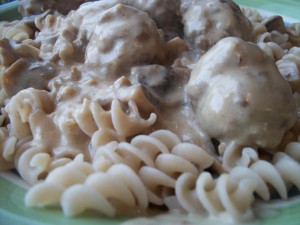There has been an awful lot of back-and-forth about the ALS ice water challenge; some folks think it’s great and some folks think it’s awful. I think that it’s great for ALS research, but is bad for society in the long run.
I’m not going to jump on the bandwagon of those who insist this viral charity thing should never have happened; I’m glad that a great deal of money was (apparently) raised for ALS research. But I think it does not bode well for the future of charity and giving in our world.
There are millions of causes that are equally worthy (and perhaps even more worthy) of our attention as ALS research. AIDS research. IBS research. Starving children in Haiti. Starving children in Rwanda. Cancer research. Homelessness in the US. Parkinson’s research. Education. Orphanages. Clean water in third world countries. Hurricane recovery. Alzheimer’s research. Flood recovery. On and on the list can go…just do a search for charitable organizations, and you’ll find just how many causes there are. And just because someone came up with a creative idea for ALS research doesn’t mean that ALS research is a more important cause than any of the others. If ALS “deserves” to have such a successful fundraising campaign, don’t all of these others?
Now that ALS has had such a successful viral campaign, I suspect that many of these other organizations are thinking to themselves, “How can we get in on this and use viral social media to get more money in our coffers?”
The ALS fundraiser has taught people a lesson, and it’s not a good lesson: “I can make a difference in the world without it costing me anything. In fact, not only did it not cost me anything, it was actually fun to make a video and post it to social media and impress my friends with my activism!”
And when the next viral charity campaign arrives, those people will say, “Alright! I’m going to make a difference to people with Irritable Bowel Syndrome by posting a video of myself on the toilet !” (yes, this one has already started, and without any ill will toward my various friends with IBS, I sincerely hope it doesn’t catch on).
But here’s the problem: if 20% of the people who did the ALS challenge donated to ALS, of that 20%, a certain percentage (I can’t guess how big a percentage) will say, “This is a great cause, but I just donated to ALS research, so I’m not going to donate to IBS research; I’m going to take the easy way out this time, and just post a video for all my friends to like.”
And once the IBS thing is done, and viral charity #3* comes along, even fewer people will donate to it, and we will quickly reach a point of little-to-no return for a whole lot of social activity.
Why is this a problem? Because as viral charity continually decreases in effectiveness, what will not decrease is the number of people who repeatedly (and incorrectly) tell themselves, “I’m making a difference in the world without it costing anything.” (Don’t believe me? Consider how many people were proudly convinced that they were making a difference in the world by “sharing” the Kony video back in 2012. ’nuff said?)
(And if you’re thinking, “What Kony video?” you’re also proving a point about the fickle and shallow nature of “awareness” that social media promotes.)
Charity is costly. But we are in the process of training an entire generation into believing that they can make a difference in the world without lifting a finger and without spending a penny.
I’m thrilled that ALS research will hopefully take a step forward as a result of the ice challenge, but I can’t in good conscience participate in it, because I don’t want to lend my own voice to the flawed notion that – in the long run – we can change the world without cost. I also don’t want to lend my voice to the flawed notion that the charities worthy of my attention are the ones which can come up with clever, creative, viral campaigns.
If you participated in the ice challenge, rejoice in the fact that it was successful, but remind yourself that this is a flawed and doomed technique, and the next time something like this comes up, please politely decline to participate, and ask yourself if there is a worthy cause you can donate to.
And remind yourself that Doug doesn’t want to see a video of you sitting on the toilet!
Learn More about ALS
In 1994, a college professor at Brandeis University was diagnosed with ALS. When one of his former students, Mitch Albom, heard of his diagnosis, he began a weekly pilgrimage to visit his old professor. A pilgrimage by plane from Detroit to Massachusetts. On his own dime. For thirteen weeks.
In 1997, he wrote and published a book about the experiences, titled Tuesdays with Morrie. The book topped the New York Times Bestseller List for 22 weeks in 2000. It was made into a TV movie and a stage play.
In 2013, 16 years after he wrote the book, I picked up a copy, because I had heard so many good things about it. That – and not the ice challenge – was my introduction to ALS. Imagine that – 16 years after publication, Mitch Albom’s work is still causing people to find out more about ALS. I sincerely hope the book has been successful enough to recoup the money he spent on all those plane tickets, but the truth is, regardless of how much the book may have profited him, the difference he made to Morrie, and to others with ALS, began at cost to himself.
That’s the model of giving I want to use for myself.
———————-
* Viral Challenge #3 is “Chug a beer to stop PMS,” which points out another issue that we’re going to have to deal with: people are already not taking this seriously.






